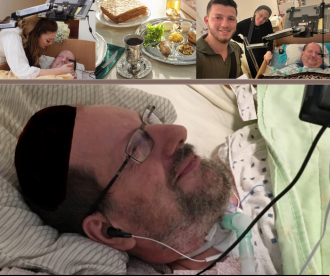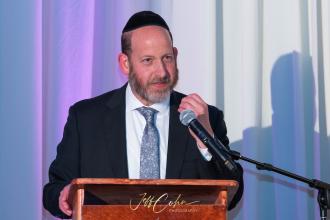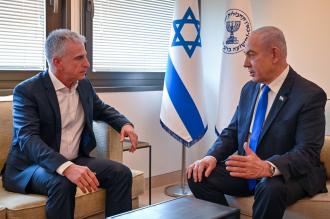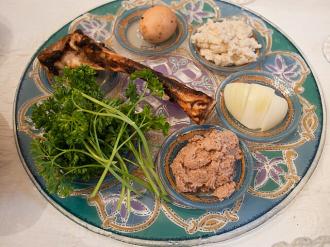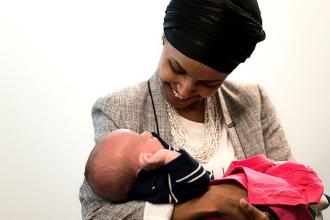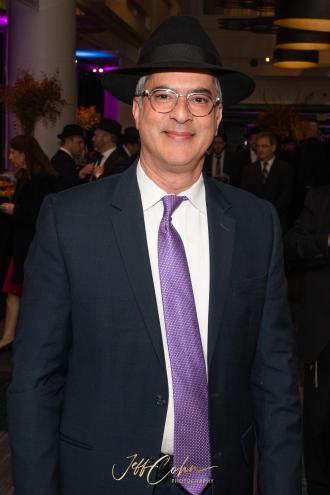Bat-Galim Shaar to The Post: "It's still not easy. Five years is a lot of time, but we choose life."
Five years after the kidnapping and murder of three teenagers led to Operation Protective Edge against Hamas, how much has changed on the ground?
On June 12, 2014, Eyal Yifrah, Gil-Ad Shaer and Naftali Fraenkel waited at a popular hitchhiking spot next to Alon Shvut in Gush Etzion south of Jerusalem hoping to catch a ride toward their respective homes.
When a Hyundai i35 stopped, they entered and shortly afterward realized that the driver and passenger were not Israeli. Gil-Ad Shaer was able to call police at 10:25 p.m., whispering “We’ve been kidnapped.” Two minutes later after gunshots were heard, the call was dropped.
Their bodies were discovered 18 days later on June 30 in a shallow grave in the Palestinian city of Halhul near Hebron.
Following the kidnapping, the IDF conducted Operation Brother’s Keeper to arrest Hamas leaders in the West Bank, with the Gaza Strip-based terrorist group increasingly firing rockets into Israel. The IDF in turn launched airstrikes and sent troops into the coastal enclave.
The resulting war – during which terrorist groups surprised Israel by using cross-border attack tunnels – lasted seven weeks and left 67 IDF soldiers dead. The remains of Oron Shaul and Hadar Goldin are still in the hands of Hamas.
Five years later, Israel insists that deterrence has been restored. But in the past year alone, nine rounds of violence have erupted between the two sides, nine times that Israel almost went to war in the Gaza Strip, again.
So what’s changed since 2014?
On the Gaza front, the IDF says it has destroyed 15 tunnels since October 2017, both crossing into Israel from inside the Strip. It has also completed some 27 of 65 km. of the underground barrier designed to block tunnels from crossing into Israeli territory from Gaza. The underground barrier, which will also stretch into the Mediterranean to stave off Hamas infiltration by sea, will be complemented by a six-meter-high smart fence.
Israel says it has removed Hamas’ strategic underground surprise.
Great. But while Hamas can no longer surprise Israel from below, terrorist groups in the Gaza Strip have increased their missile arsenal in both quality and quantity.
In the last round of violence, close to 700 rockets were fired into southern Israel, killing four civilians.
Thousands of Palestinians also demonstrate on a weekly basis along the security fence, and the first IDF soldier killed since Operation Protective Edge occurred during one such violent riot.
That’s Gaza. What about the West Bank? Well, it’s not much better.
Since October 2015, Palestinian youth have stabbed, run over and shot IDF soldiers and civilians – including some tourists – in a wave of violence in the West Bank and Israel. While the violence has since decreased since its peak in the winter of 2016, when there were attacks almost daily, 16 Israelis were killed in 2018-2019.
Those attacks are just the tip of the iceberg of stabbings, shootings and car rammings prevented by security forces.
Recently, the IDF unveiled plans to improve the level of intelligence gathering and sharing in the West Bank in an attempt to stay one step ahead of deadly terrorist attacks, like the one which claimed the lives of the three boys in 2014.
The system – an increase in surveillance cameras and other sensors in key West Bank locations – includes advanced computer analytics and visual intelligence that are all connected to an operations room.
The military hopes the system will assist in identifying imminent threats, foiling attacks in real time and carrying out manhunts for terrorists fleeing following an attack.
For Bat-Galim Shaer, security forces are doing the maximum to prevent similar terrorist attacks to the one which took the life of her son Gil-Ad.
“The security forces and IDF are doing the best job that they can do,” she told The Jerusalem Post on Tuesday. “The commanders and police and security forces try to do their best. I really trust that they do the maximum. It’s not easy in our area and reality. I’m sure that they learned the lessons [from the 2014 attack], and today there is a direct line of communication between the IDF and police, not like it was before.
“We embrace troops who are in the area, and we really appreciate what they do for us,” she said. “Unfortunately, terrorist attacks are not connected to where you live. There are attacks in Tel Aviv, Jerusalem, Pennsylvania... all around the world, and we have to think together about how to deal with this issue.”
Shaer told the Post that she “hopes and believes” that Israel is doing all that it can to bring back the bodies of Oron Shaul and Hadar Goldin from the hands of Hamas in Gaza.
“A country that brings their [MIA] boys back after 35 years shows that it’s a priority for the country,” she said, referring to IDF soldier Zachary Baumel whose body the IDF recovered from Syria earlier this year. “I hope and believe that the army is doing everything it can do to bring the boys home as soon as they can. We remember them every day. My heart is with the families. We are in touch with them. We love them and embrace them.”
Shaer told the Post that she tries to remain optimistic about the situation.
“I’m a very realistic person, but I try to see the glass half full, to see things that give me strength.”
And what gives her strength are the projects she’s begun in her son’s memory, the latest one SonShine, which hopes to strengthen the connection between Jews in Israel and those in the Diaspora.
“The main goal is to keep the optimism that we had during the 18 days [in 2014] of searching for the boys,” Shaer explained. “The people of Israel were in a very unique place. People were more patient. They were helpful, and we felt the hurt of the entire nation. We have a very special nation, and people take care of each other, and want to know each other.” Read more at JPost


